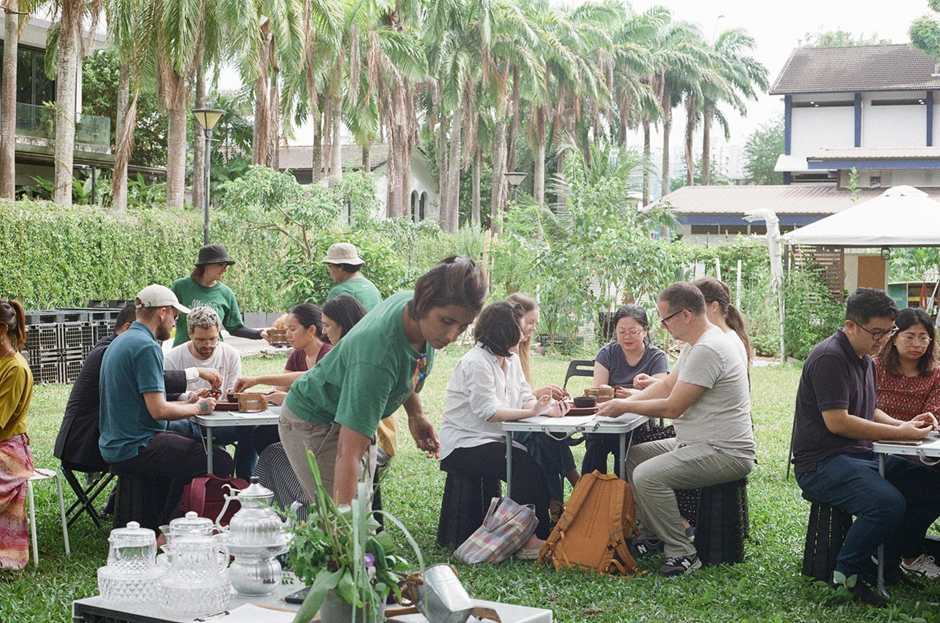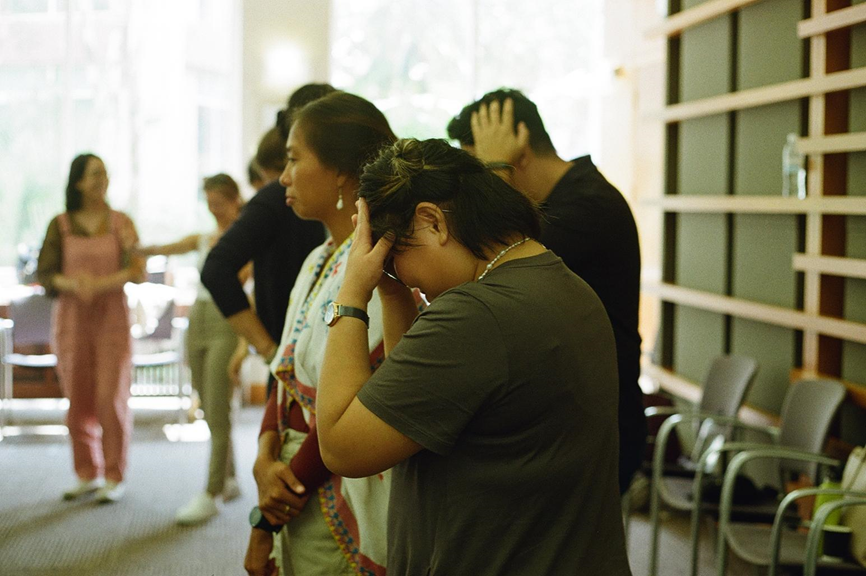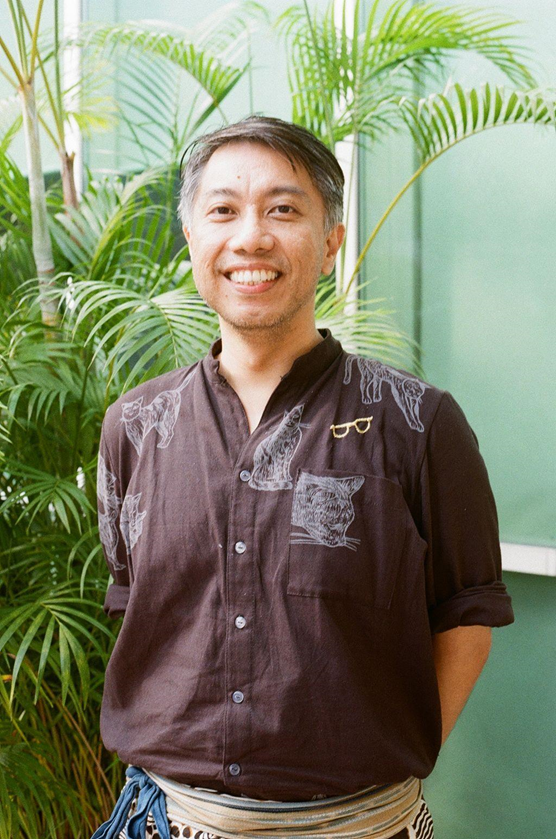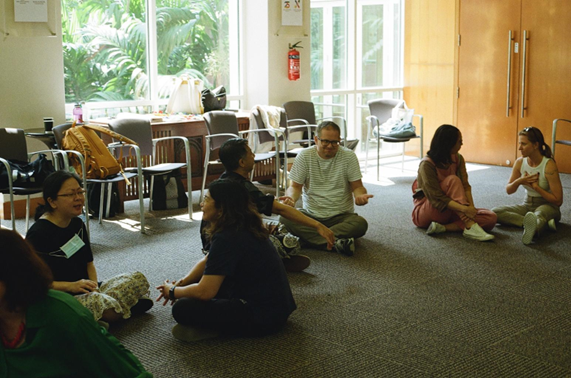By Carla Castle
Cultural Diplomacy: What's in it for the artists?

This article is written as part of the Arts Journalism Matters Fellowship 2023 organised by the Asia-Europe Foundation, in collaboration with European network on cultural management and policy (ENCATC), in September 2023. Using the ASEF LinkUp | Asia-Europe Cultural Diplomacy Lab, this article is one of the 3 outputs created by the resident journalists. The following article written by Carla Castle, explores art's role in cultural diplomacy, weaving in interviews from several participants in the lab.
The Asia-Europe Foundation (ASEF) recently held its inaugural cultural diplomacy lab, ASEF LinkUp | Asia-Europe Cultural Diplomacy Lab, in October 2023. The closed-door event was by invitation only. True to the word ‘lab’, it was both an experiment for its organisers and participants — what happens when you gather diverse professionals from the arts & cultural sectors to discuss cultural diplomacy? With no expectations surrounding the outcome of the lab, discussions were grounded around various themes, such as ‘The Great Divide’, or ‘Finding Beauty In Difference’.
The activities throughout the lab were similar to a college summer programme. Its first day kicked off at the Goodman Arts Centre. Devoid of microphones, assigned seats and ceremonial fanfare, the participants and workshop facilitators — Aleksander Brkic, Gaëlle Patin-Laloy, and Kamini Ramachandran — were gathered at Melba’s Café with little distinction between one another, setting the tone for the open-ended nature of the lab. Tay Tong, the Director of Visual Arts at Singapore’s National Arts Council, commenced the lab with a candid provocation, prompting participants to reflect on how their work related to cultural diplomacy.
Throughout the lab, participants were treated to various talks, brainstorming sessions, and several interactive workshops — such as an experimental theatre workshop by Singapore theatre company DramaBox, a ‘seed bomb’ making class, or a storytelling workshop by Kamini Ramachandran.

1. Participants created seed bombs on the first day. Using the workshop as an icebreaker, conversational prompts were given throughout to get the participants introduced to one another © Carla Castle
There was no need for concrete results at the end of the lab — rather, participants were encouraged to focus on the discussion process. Instead of proposing solutions or projects as expected, the lab tasked its participants with an instinctive, spontaneous ‘response’.
A deceptively simple premise.
Cultural diplomacy, after all, is a rather abstract concept. While the Institute for Cultural Diplomacy defines it as “[A] course of actions, which are based on and utilise the exchange of ideas, values, traditions and other aspects of culture or identity,” and explains that anyone from “either the public sector, private sector or civil society” can practice it, such definitions don’t illustrate how this happens on a small scale, let alone for actors such as artist.
I had one nagging question throughout the lab: What’s in it for an artist to engage in cultural diplomacy? After all, the world of an artist and cultural diplomacy can seem worlds apart at first glance — a common notion shared by several of the participating artists interviewed for the article.

2. (Centre) Soe Yu Nwe, a ceramics artist from Myanmar, during the experiential theatre workshop by DramaBox © Carla Castle
Soe Yu Nwe, a ceramicist from Myanmar, sums it up best: “I’m an artist; I work in isolation”. Stereotypically, artists are often pictured as independent individuals, rarely associated with cultural diplomacy. Luvenia Kalia, a dancer from Malaysia, shares, “I think artists like to isolate themselves from this [cultural diplomacy]... or even anything that has to do with diplomacy.”

3. Blanca Rosa Rasmussen Ruiz is a Spanish illustrator who’s art features both European and east Asian influences due to her lived experiences across both continents © Carla Castle
Several artists, like Blanca Rosa Rasmussen Ruiz De Infante, a Spanish illustrator based in Vietnam, were initially apprehensive about the lab. “I didn’t know what to expect. I didn’t know if I would fit in, I didn’t know if it made sense for me to [attend]”. Tony Sugiarta, owner of ANERD Gallery, which specialises in Batik Fabrics, shared similar sentiments. “I [wasn’t] sure what exactly [what] the whole lab was about.”

4. Throughout the discussions, teams could be found brainstorming their ideas and responses to the different themes © Carla Castle
Mutual understanding at the heart of cultural diplomacy
While it was expected that the participants would learn more about Cultural Diplomacy, the lab’s ‘show don’t tell’ approach meant that the concept’s definition was never spelt out in full. Rather, participants came to conclusions about Cultural Diplomacy through their interactions and discussions.
For the artists, they learnt that the foundation for cultural diplomacy lies in the need to communicate and build lasting relationships on mutual understanding — a surprisingly uncomplicated conclusion. Through the lectures and discussions, Ruiz shares, “The first two days made me realise that I am an active participant of cultural diplomacy”.

4. Kathleen Ditzig, a Singaporean curator at the National Gallery of Singapore © Carla Castle
As Kathleen Ditzig, curator at the National Gallery of Singapore, emphasises, ultimately, “people are at the centre of the equation.” She elaborates, “I think that the most important is to acknowledge that we think that we are not our jobs… or that we are not the agenda we represent… but all of these agendas are still informed by human conditions in which we can connect”.

5. Antonín Brinda, an independent performance artist, curator and member of the Art and Theatre Institute, a Governmental Organisation in the Czech Republic © Carla Castle
As a member of the Art and Theatre Institute, a Governmental Organisation from the Czech Republic, and an independent artist, Antonín Brinda straddles between being both a public servant and an artist. In his experience, most people would not realise they already engage in cultural diplomacy. He explains that regardless of what label he uses, “[E]ven as an artist, or facilitator, I still see myself as [a] cultural diplomat, because it is about going places, meeting people, working on some mutual understanding,” seeing cultural diplomacy as a “mission” of his.
What's in it for the artist?
Throughout the interviews with the artists, what struck out was how, in the web of cultural diplomacy, they had a surprising amount of freedom in engaging in it — akin to a ‘Queen’ chess piece. Kalia explains that the lab taught her “more about the constraints that people face and the helplessness that everybody has in this idea of cultural diplomacy”. Artists, being more comfortable with chaos, are more adept at navigating this than they realise. “As an artist, I feel more comfortable with chaos,” she shares, adding that “in many ways, I think artists have more freedom than many other agents in this.”

6. Luvenia Kalia, dancer, performing artist, creator and producer from Penang, Malaysia © Carla Castle
A huge advantage for artists is, thus, their relative ease in navigating a complex web of relationships — here, art is a powerful, malleable tool. While cultural diplomacy, in practice, can be as simple as working together with people from different cultures on a common goal, as Ditzig explains, art and artists can go a step further with what she describes as ‘art-led diplomacy’.
To Ditzig, art enables productive discussions on “key issues.” She shares, “People forget about the exceptional space of art to have difficult, complicated questions at a very human scale and how productive that can be,” where art provides a safe space to explore issues from various, sometimes conflicting, perspectives.

7. Tony Sugiarta runs ANERD gallery, which specialises in Indonesian textiles and Batik art © Carla Castle
Similarly, for Sugiarta, art is a powerful communication tool for cultural diplomacy. Using Batik as an example, it easily becomes “a source of conversations”, where instances like the motifs on a leader’s Batik garment can communicate a strong message. “It’s very much an idea of how we communicate all these different values through art,” he shares.
Where ASEF LinkUp comes into play
The interactions and workshops throughout the lab made it clear that artists have a role to play in cultural diplomacy — it depends on whether the artist wants to engage. For example, several non-profit and non-governmental organisations often need creative and engaging ways to connect with audiences from different cultures. Art and artists become key players in that regard, given art’s propensity to get a large audience to connect. For the artists, engaging in cultural diplomacy also introduces a new avenue for them to engage in their practice.
While the lab revealed the vast potential and opportunities for artists to engage in cultural diplomacy, activities – such as DramaBox’s experiential theatre workshop – reveal that cultural diplomacy is a multifaceted endeavour involving various actors with distinct concerns and agendas.
A common theme amongst the responses was that successful diplomatic interactions ultimately lie in effective communication and that all diplomatic interactions hinge heavily on finding common ground, cooperation and compromise.
 |  |
| 8. Photos from the experimental theatre workshop. (Left) Participants share the challenges they face when practising cultural diplomacy. (Right) Participants are acting out a scene, each person representing a different stakeholder in cultural diplomacy. © Carla Castle | |
Another common theme across several interviews was the initial assumption that engaging in cultural diplomacy might not align or be relevant to their artistic practice, the perception that cultural diplomacy is much more distant than it appears. It was only throughout the lab did those views changed.
ASEF LinkUp’s biggest draw was its process – the free and relaxed environment allowed everyone to come to their own conclusions, and the lab acted as a thought experiment for everyone involved. What became clear throughout the lab was the necessity of such forums for artists — opportunities to engage with the diplomatic sector are few and far between, let alone experiences that even the playing field and blur the boundaries of each participant’s respective roles.
As a result, the lab went beyond a space where artists learnt to recognise their impact in cultural diplomacy but embodied it through shared dialogues and collaborative work.
About the Author
Carla Castle is an aspiring arts journalist and researcher who hopes to share her excitement for cultural policy and Southeast Asian art. Her aspirations revolve around wanting to represent Southeast Asian art through a native lens in the English-speaking world — given how one’s cultural background shape representation and perception.
As an arts manager and writer based in Singapore, her multicultural background influences her diplomatic nature, where she’s highly attuned to working cross-culturally. Driven by her love for arts and culture, Carla recently worked on ARTWALK 2023 as the team leader. Under her leadership, ARTWALK shifted to contemporary programming to engage its audiences better while staying true to ARTWALK’s celebration of culture and heritage.
Carla holds a Diploma in Broadcast Media with Distinction, where her award-winning works were showcased worldwide in film festivals and exhibitions.
The Asia-Europe Foundation (ASEF), through its arts and culture website, culture360.ASEF.org is proud to collaborate with ENCATC to present a 2nd edition of Arts Journalism Matters.
This edition launched with a 4-week virtual residency, under the mentorship of Ms Audrey Wong, cultural policy expert and arts educator at LASALLE College of the Arts from Singapore. Selected participants also had the opportunity to practice skills and knowledge gained from the residency, to cover an on-site event, ASEF LinkUp | Asia-Europe Cultural Diplomacy Lab as a journalist. Find out more about the participants who gathered for the first edition of ASEF LinkUp here.
Stay tuned for the next edition of Arts Journalism Matters!
Similar content
posted on
posted on
posted on
posted on
posted on


